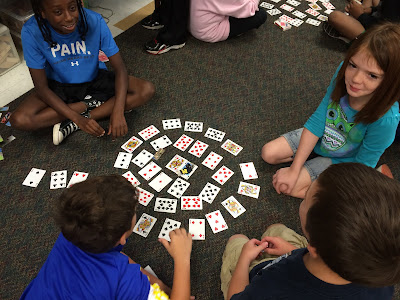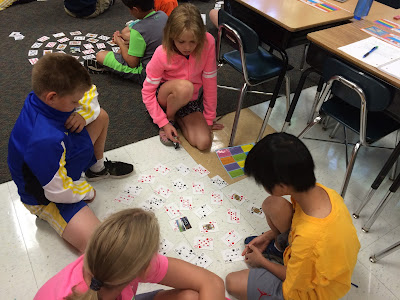Spiral Multiplication
Greetings!
We learned a new way to
practice our multiplication facts last week.
It’s a game that can be done easily at home and the kids love to play it…especially
when they get to make up some of the rules!
J
Spiral Multiplication
Game Rules
Materials:
Deck of cards
Game pieces
Dice
Game variations:
Kids get to make up rules
as the game progresses.
Cards are added to make a
larger spiral in order to keep playing
1.
Use the deck
of cards to make a spiral game board starting from the center.
2.
Place your
game pieces at the start.
3.
Player 1
rolls the die.
4.
Player 1
multiplies the number on the die (or dice for a more advanced version) by the
card the game piece is on.
5.
If they are
correct, they move the number of spaces the die shows. If they are incorrect, they do not get to
move.
Take turns and repeat
until someone reaches the end
Some RULE ideas
created last year:
If you roll a 3, you lose a turn.
If you roll a 5, the next person
loses a turn.
If you get two 1s in a row, you
get to choose the player you want to lose a turn.
You can choose to go two times in
a row, but then you’d miss a turn. You
can only do this 3 times.
If you get a 6, you go back one
space.
If you get a 1, you get another
turn.
If you roll the same number that
is on the card of the next player, you can bump them back two spaces.
If you roll a number that is next
to each other in sequence, you must stay there.
The 4th time, you choose someone to go back a space.
If you get SNAKE EYES, you get to
choose a player to move back five spaces,
If you roll a one, you go back a
space.
If you get one six, and the next
turn you get another six, you can switch places with another player.
If your card and the die has the
same number, you get to go again.

































